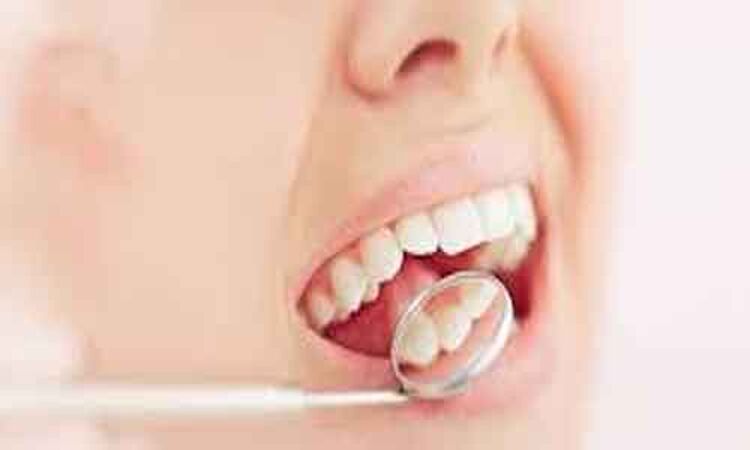- Home
- Medical news & Guidelines
- Anesthesiology
- Cardiology and CTVS
- Critical Care
- Dentistry
- Dermatology
- Diabetes and Endocrinology
- ENT
- Gastroenterology
- Medicine
- Nephrology
- Neurology
- Obstretics-Gynaecology
- Oncology
- Ophthalmology
- Orthopaedics
- Pediatrics-Neonatology
- Psychiatry
- Pulmonology
- Radiology
- Surgery
- Urology
- Laboratory Medicine
- Diet
- Nursing
- Paramedical
- Physiotherapy
- Health news
- Fact Check
- Bone Health Fact Check
- Brain Health Fact Check
- Cancer Related Fact Check
- Child Care Fact Check
- Dental and oral health fact check
- Diabetes and metabolic health fact check
- Diet and Nutrition Fact Check
- Eye and ENT Care Fact Check
- Fitness fact check
- Gut health fact check
- Heart health fact check
- Kidney health fact check
- Medical education fact check
- Men's health fact check
- Respiratory fact check
- Skin and hair care fact check
- Vaccine and Immunization fact check
- Women's health fact check
- AYUSH
- State News
- Andaman and Nicobar Islands
- Andhra Pradesh
- Arunachal Pradesh
- Assam
- Bihar
- Chandigarh
- Chattisgarh
- Dadra and Nagar Haveli
- Daman and Diu
- Delhi
- Goa
- Gujarat
- Haryana
- Himachal Pradesh
- Jammu & Kashmir
- Jharkhand
- Karnataka
- Kerala
- Ladakh
- Lakshadweep
- Madhya Pradesh
- Maharashtra
- Manipur
- Meghalaya
- Mizoram
- Nagaland
- Odisha
- Puducherry
- Punjab
- Rajasthan
- Sikkim
- Tamil Nadu
- Telangana
- Tripura
- Uttar Pradesh
- Uttrakhand
- West Bengal
- Medical Education
- Industry
Fluoride varnish reapplication helps reduce enamel demineralization, Study says

Reapplication of the CPP-ACP fluoride varnish every 4-6 weeks, is more effective in reducing enamel demineralization compared to every 12 weeks, suggests a study recently published in the Journal of Dentistry.
Moufida Abufarwa and associates from the Department of Biomedical Sciences, Texas A&M University College of Dentistry, Dallas, United States evaluated the preventive effects of different time intervals between repeated applications of the CPP-ACP fluoride varnish on enamel demineralization.
Human teeth were sectioned and randomly allocated to three groups: 4-week, 6-week, and 12-week with 22 placed in each group. Baseline images of the enamel surfaces were obtained using the FluoreCam recording the area, intensity, and impact of baseline enamel demineralization.
All groups received fluoride varnish applications at the beginning of the experiment. The varnish was reapplied every 4 or 6 weeks in the 4-week and 6-week groups, respectively.
Following each application, the groups underwent thermo-cycling, tooth brushing and pH cycling to simulate the time effect. After 12 weeks, the enamel surfaces were reimaged using the FluoreCam. Within and between-group differences in the area, intensity and impact of demineralization were evaluated.
The results showed that-
a. At baseline, there were no significant between-group differences for area, intensity, or impact.
b. Statistically significant (p<0.001) enamel demineralization occurred over time within each group.
c. There were significant between-group differences in the changes that occurred in area (P = 0.004), impact (P = 0.022), but not intensity.
d. The 12-week had significantly larger areas of demineralization than the 6-week (P = 0.041) and 4-week (P = 0.001) groups.
e. Changes in impact was significantly (P = 0.007) greater in the 12-week group than 4-week group, but not greater than the 6-week group.
f. There were no statistically significant differences between 4- and 6-week groups in the changes of area, intensity, or impact.
Therefore, the authors concluded that "reapplication of the CPP-ACP fluoride varnish every 4–6 weeks, is more effective in reducing enamel demineralization compared to every 12 weeks."
Dr. Nandita Mohan is a practicing pediatric dentist with more than 5 years of clinical work experience. Along with this, she is equally interested in keeping herself up to date about the latest developments in the field of medicine and dentistry which is the driving force for her to be in association with Medical Dialogues. She also has her name attached with many publications; both national and international. She has pursued her BDS from Rajiv Gandhi University of Health Sciences, Bangalore and later went to enter her dream specialty (MDS) in the Department of Pedodontics and Preventive Dentistry from Pt. B.D. Sharma University of Health Sciences. Through all the years of experience, her core interest in learning something new has never stopped. She can be contacted at editorial@medicaldialogues.in. Contact no. 011-43720751
Dr Kamal Kant Kohli-MBBS, DTCD- a chest specialist with more than 30 years of practice and a flair for writing clinical articles, Dr Kamal Kant Kohli joined Medical Dialogues as a Chief Editor of Medical News. Besides writing articles, as an editor, he proofreads and verifies all the medical content published on Medical Dialogues including those coming from journals, studies,medical conferences,guidelines etc. Email: drkohli@medicaldialogues.in. Contact no. 011-43720751


